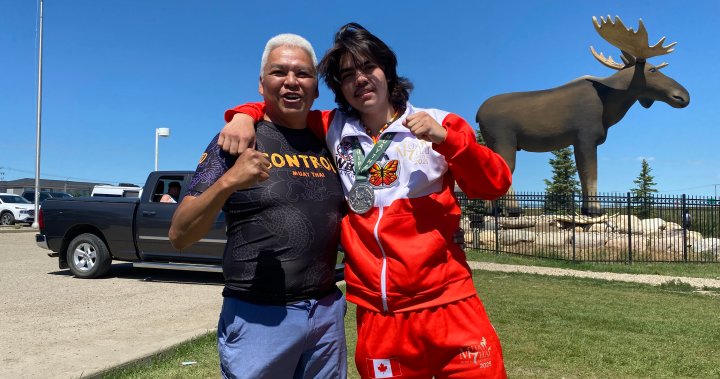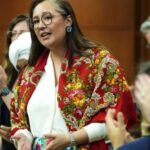The sound of cheers erupted from a small but mighty Saskatchewan contingent last week as Prince Albert’s Brandon Olson clinched silver at the IFMA Muay Thai World Festival in Bangkok. The 35-year-old athlete’s achievement marks a significant milestone for combat sports in the province and adds to Canada’s growing international presence in the discipline.
“When you’re in that ring, you’re not just fighting for yourself anymore,” Olson told me via video call, still sporting the faint markings of competition around his eyes. “You feel the weight of representing your community, your province, and your country all at once.”
Olson’s journey to the silver medal wasn’t straightforward. Training out of Prince Albert’s Complete Martial Arts and Fitness, he balanced rigorous preparation with his day job as a corrections officer. This dual life—protecting communities professionally while pursuing athletic excellence personally—resonates with many Saskatchewan athletes who rarely enjoy the luxury of training full-time.
The tournament, which wrapped up on July 7, saw competitors from over 100 countries converge in Thailand, the spiritual home of Muay Thai. For context, this combat sport combines striking techniques using fists, elbows, knees, and shins—earning it the nickname “the art of eight limbs.”
Provincial combat sports have historically received limited funding compared to mainstream athletics. According to SportSask annual reports, combat disciplines like Muay Thai typically receive less than 5% of total provincial sports funding, despite growing participation rates of nearly 15% annually since 2020.
“Brandon’s achievement isn’t just personal—it’s transformative for our provincial combat sports community,” explained Carla Bennett, president of Saskatchewan Muay Thai Association. “When our athletes succeed internationally, it creates pathways for the next generation to believe they can do the same.”
The medal carries particular significance as Muay Thai gains Olympic recognition. The International Olympic Committee granted provisional status to the sport in 2021, positioning it for potential inclusion in future Games—perhaps as soon as Los Angeles 2028.
What makes Olson’s achievement remarkable is the caliber of competition he faced. The semifinals saw him defeat a Ukrainian champion before narrowly losing to Thailand’s Sittisak Chor in the gold medal match. Sport analysts note that defeating established competitors from countries with professional Muay Thai circuits represents a significant breakthrough for Canadian fighters.
“I actually felt calm before the final,” Olson remarked, contradicting what one might expect. “There’s this moment when you realize you’ve already accomplished something extraordinary just by being there. The pressure transforms into gratitude.”
The silver medal comes with practical benefits beyond personal achievement. Team Canada coach Sarah McHugh believes international podium placements directly impact funding formulas and athlete support mechanisms. “Success breeds success in sports development,” McHugh said during the team’s homecoming reception. “Brandon’s medal will help us make the case for expanded provincial support.”
For perspective, Thailand’s national Muay Thai program operates with annual budgets exceeding $5 million, while Canada’s entire combat sports envelope reportedly hovers around $750,000 spread across multiple disciplines.
Back in Prince Albert, Olson’s achievement has already sparked increased interest. Local gym owner Peter Martinson reported an immediate 30% uptick in inquiries about youth Muay Thai programs following news of the medal.
“Kids need hometown heroes,” Martinson told me while supervising an evening training session. “When someone from your community stands on a world podium, suddenly dreams feel attainable rather than impossible.”
The ripple effects extend beyond Prince Albert. Provincial sports administrators have initiated discussions about developing a high-performance strategy specifically for combat sports, potentially establishing Saskatchewan’s first dedicated training center for disciplines like Muay Thai, wrestling, and judo.
When asked about the future, Olson paused thoughtfully before responding. “This medal belongs to everyone who supported me—my family, my gym, my community. Next time, we’re going for gold, but more importantly, we’re going to bring more Saskatchewan athletes with us to compete.”
The achievement hasn’t gone unnoticed by provincial officials. In a statement, Saskatchewan’s Minister of Parks, Culture and Sport Laura Ross acknowledged the significance: “Brandon’s silver medal demonstrates Saskatchewan’s growing presence in international athletics and showcases the excellence being developed right here in our communities.”
For a province whose international sports recognition often comes through hockey or curling, Olson’s achievement broadens the narrative about Saskatchewan athletics and highlights the diversity of sporting excellence being cultivated in communities across the province.
As Olson returns to his regular training schedule and corrections work, the silver medal serves as a tangible reminder that world-class athletic achievement can emerge from anywhere—even from the prairies of Saskatchewan, thousands of kilometers from the sport’s birthplace.






